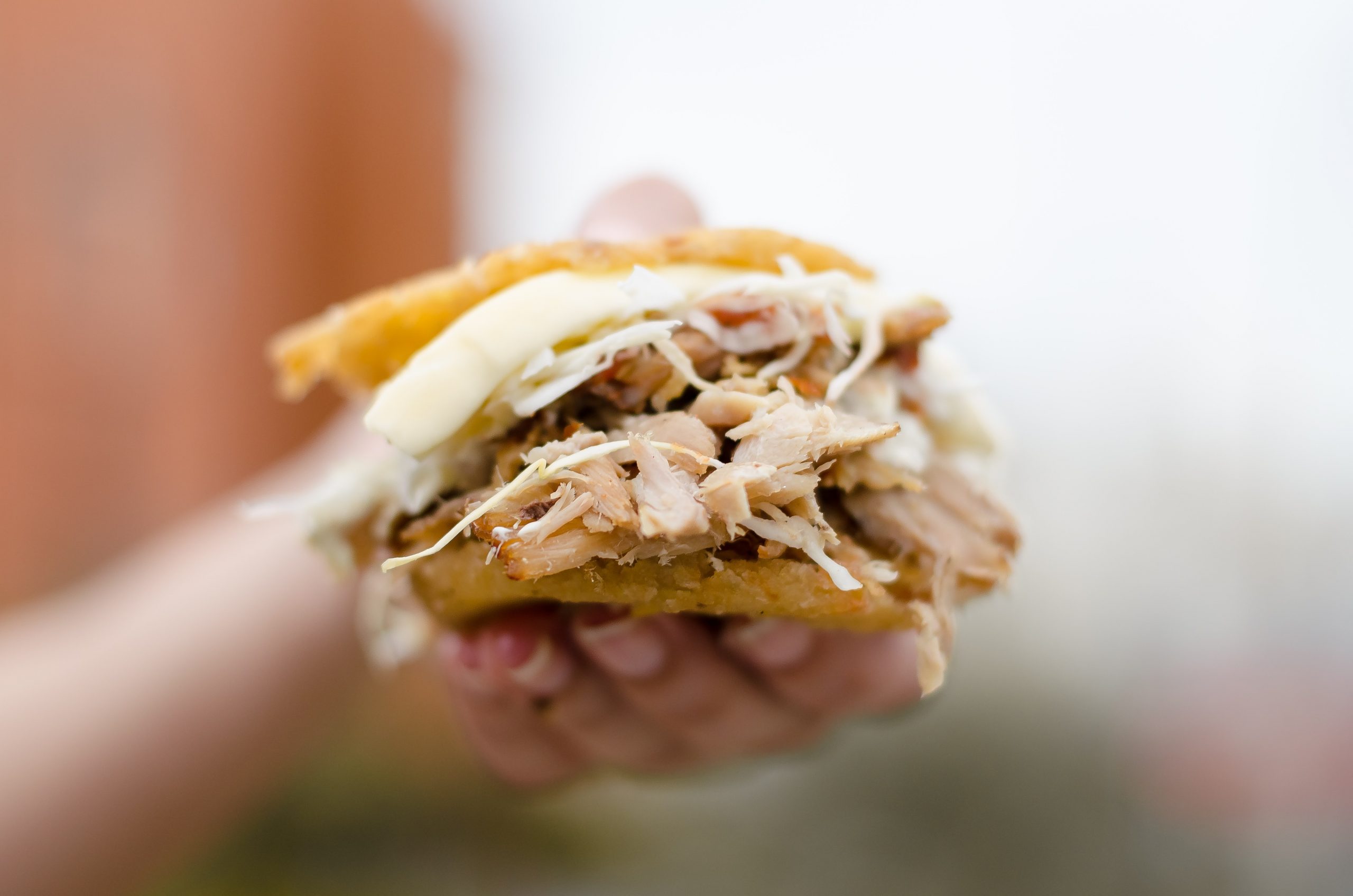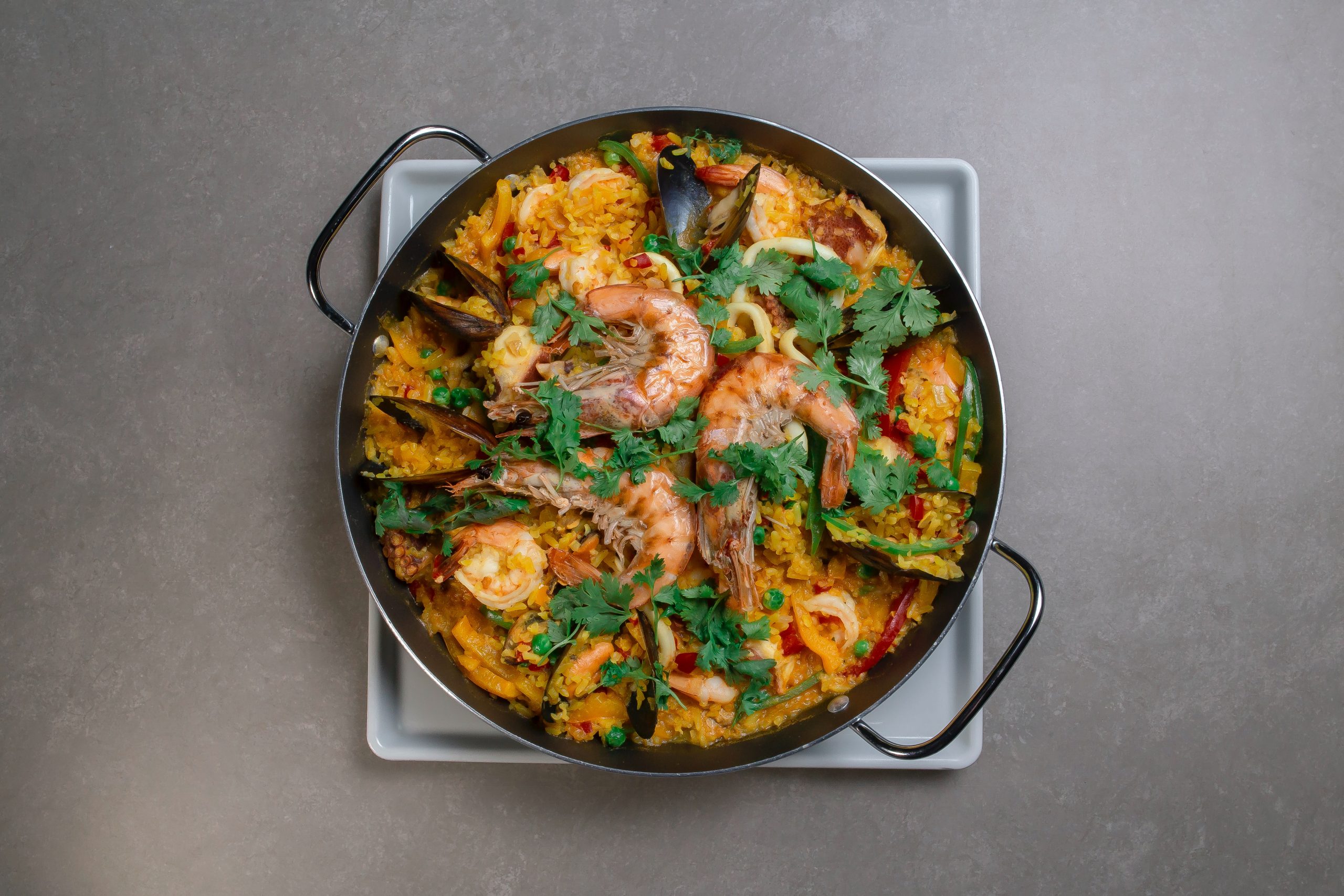
We all know eating is not only essential to survive, but one of the greatest pleasures in life. This is why we have chosen to focus on the verb comer (to eat) in this article, so you can cover your basic needs in Spanish as well. Lucky for you, the verb comer is regular, so it shouldn’t give you as much trouble as some of our previous conjugations. We’ll go over the comer conjugation starting from the basics and leading up to some pro-tips. There will be some examples as usual, as well as some useful and fun phrases, not to mention some suggestions of food you should definitely try.
Are you ready to try delicious new meals?
Verbals of comer: infinitive, gerund and participle
Now that you have an idea of what kind of verb comer is, we’ll move onto its conjugation. We’ll start by looking at its verbals: the infinitive, the gerund and the participle. Verbals can get tricky as they actually function as nouns, adjectives and adverbs and not as actual verbs. But worry not! After we look at some examples, you’ll find that this part of the comer conjugation doesn’t really taste so sour.
Infinitive
Comer (to eat)
- Vamos a comer todos juntos el domingo. (We’ll all eat together on Sunday.)
Gerund
Comiendo (eating)
- Estaba comiendo un helado y se me cayó. (I was eating an ice cream cone and I dropped it.)
Participle
Comido (eaten)
- Si hubieses comido todo el almuerzo, ahora no tendrías hambre (If you had eaten all of your lunch, you wouldn’t be hungry now.)
Comer conjugation for all levels
The casual foodie: comer conjugation for beginners

As you might know, there are 10 tenses in the indicative mood in the Spanish language. We’ll get you started with the most common and simplest forms for the comer conjugation: presente (present), pretérito imperfecto (imperfect preterite, a form of the past tense), pretérito perfecto (perfect preterite, another form of the past tense) and futuro (future).
| Subject | Present | Imperfect Preterite | Perfect Preterite | Future |
| Yo (I) | como | comía | comí | comeré |
| Tu (You) Vos (Latin America) |
comes
comés |
comías | comiste | comerás |
| Usted (You, formal)
El/Ella (He/She/It) |
come | comía | comió | comerá |
| Nosotros (We) | comemos | comíamos | comimos | comeremos |
| Vosotros (You, plural) Ustedes (Latin America) |
coméis
comen |
comíais
comían |
comisteis
comieron |
comeréis
comerán |
| Ellos (Them) | comen | comían | comieron | comerán |
Comer conjugation examples for beginners
- Present: ¡Comen fruta todos los días!. (They eat fruit everyday!)
- Imperfect preterite: Mis abuelos comían platos italianos tradicionales. (My grandparents used to eat traditional Italian dishes)
- Perfect preterite: ¡Estaba tan delicioso que me lo comí todo! (It was so delicious I ate it all!)
- Future: Ya te lo comerás. (You’ll eat it eventually.)
The committed foodie: comer conjugation for intermediate students

Nicely done! You are no longer a lazy eater. Now it’s time to step up your game and focus on the compound tenses of the comer conjugation in the indicative mood.
When it comes to compound tenses in Spanish, mastering the haber conjugation is key. The only form of comer that actually comes into play here is the participle “comido”. To construct compound tenses in Spanish, you need to use the correct form of the verb haber + the past participle of the verb in question (i.e., comido), which is the one that carries the meaning.
In the table below, you’ll find the pretérito perfecto (preterite perfect), pluscuamperfecto (pluperfect) and futuro compuesto (future perfect) tenses for comer, but it might also be useful for you to take a look at our article on the haber conjugation.
| Subject | Preterite Perfect | Pluperfect | Future Perfect |
| Yo (I) | he comido | había comido | habré comido |
| Tu/Vos (You) | has comido | habías comido | habrás comido |
| Usted (You, formal)
El/Ella (He/She/It) |
ha comido | había comido | habrá comido |
| Nosotros (We) | hemos comido | habíamos comido | habremos comido |
| Vosotros (You, plural)
Ustedes (Latin America) |
habéis comido
han comido |
habíais comido
habían comido |
habréis comido
habrán comido |
| Ellos (Them) | han comido | habían comido | habrán comido |
Comer conjugation examples for intermediate level
- Preterite perfect: ¿Has comido algo? (Have you eaten anything?)
- Pluperfect: Había comido tres pizzas enteras. (He/She had eaten three whole pizzas.)
- Future perfect: Ya habrán comido. (They will we have eaten by now.)
The connoisseur: comer conjugation for advanced learners

Now, here comes the real challenge: the subjunctive mood. This Spanish mood is quite abstract; it is used to express doubts, emotions, desires, and the unknown. Below, we’ll look at its presente (present), imperfecto (imperfect) and futuro (future) tenses for the comer conjugation.
| Subject | Present | Imperfect | Future |
| Yo (I) | coma | comiera o comiese | comiere |
| Tu (You)
Vos (Latin America) |
comas | comieras o comieses | comieres |
| Usted (You, formal)
El/Ella (He/She/It) |
coma | comiera o comiese | comiere |
| Nosotros (We) | comamos | comiéramos o comiésemos | comiéremos |
| Vosotros (You, plural)
Ustedes (Latin America) |
comáis
coman |
comierais o comieseis | comiereis
comieren |
| Ellos (Them) | coman | comieran o comiesen | comieren |
Comer conjugation examples for advanced learners
- Present: ¡No comas eso, está podrido! (Don’t eat that, it’s rotten!)
- Imperfect: Si comieran más verduras, serían más saludables. (If you ate more vegetables, you’d be healthier.)
The subjunctive future is not really used in speech nowadays, and you are more likely to find it in literature or legal contexts. We haven’t added a conjugation example for the comer subjunctive future here, as this verb in that conjugation is very rare, and you are very unlikely to come across it. However, it is good to know it exists and what it looks like.
Extra comer conjugation: conditional tenses and imperative
If you are still hungry for knowledge, here you’ll find some extra tenses of the comer conjugation. We have the condicional simple (simple conditional) and the condicional compuesto (conditional perfect), as well as the imperative, in the table below.
| Subject | Simple Conditional | Conditional Perfect | Imperative |
| Yo (I) | comería | habría comido | |
| Tu (You)
Vos (Latin America) |
comerías | habrías comido | come
comé |
| Usted (You, formal)
El/Ella (He/She/It) |
comería | habría comido | coma |
| Nosotros (We) | comeríamos | habríamos comido | comamos |
| Vosotros (You, plural)
Ustedes (Latin America) |
comeríais
comerían |
habríais comido
habrían comido |
comed |
| Ellos (Them) | comerían | habrían comido | coman |
Comer conjugation examples in the conditional tenses
- Simple conditional: ¿Comerías un gusano por dinero? (Would you eat a worm for money?)
- Conditional perfect: Si hubiese sabido de este festín, no habría comido antes de venir. (If I had known about this feast, I wouldn’t have eaten before coming.)
- Imperative: ¡Come todo lo que hay en el plato! (Eat the whole plate!)
If you want more details about conditional tenses, you can take a look at this article.
The different meals of the day
We all know there are three main meals in the day: breakfast, lunch and dinner. Well, unlike in English, there are verbs that go along with them in Spanish. Let’s take a look at them below:
Desayunar (to have breakfast)
- Esta mañana desayuné café y una tostada. (This morning I had coffee and toast for breakfast.)
Almorzar (to have lunch)
- ¿Qué hay para almorzar hoy? (What’s for lunch today?)
Cenar (to have dinner)
- Hoy cenamos en lo de mis suegros. (We are having dinner at my in-laws today.)
Moreover, in some cultures, it is customary to have a midafternoon snack as dinner takes place between 8 and 11 pm. This is called merienda and the corresponding verb is merendar, which roughly corresponds to having tea or an afternoon snack.
Food from the Hispanic communities
No article about the comer conjugation would be complete without a taste of some of the rich Hispanic culture, so we invite you to enjoy this full meal.
Appetizer: arepas

Arepas are very common in Colombia and Venezuela. They consist of a ground maize dough filled with a variety of ingredients such as cheese, meat and avocado.
Main course: paella

Paella is a traditional Spanish rice-based dish. Although the most known version of this dish contains seafood, the original recipe (from Valencia) includes peas, chicken and rabbit. There are also other versions corresponding to the different Spanish regions.
Dessert: alfajores


Though alfajores can be found in many South American countries, the variation you see in the picture is most common in Uruguay and Argentina. They consist of two round cookies filled with dulce the leche (a type of caramel) and are usually covered in chocolate.
You can find more meals to try in this article.
Expressions with comer
Finally, let’s take a look at some fun phrases and expressions with the verb comer that can come in handy.
Pan comido
This phrase is the perfect equivalent to the English “piece of cake”. Therefore, you use it when something is very easy.
Desayunar como un rey, comer como un príncipe y cenar como un mendigo
This expression comes from the famous proverb “Eat breakfast like a king, lunch like a prince, and dinner like a pauper”, which we’re sure you are familiar with.
Come y bebe que la vida es breve
This last phrase translates roughly into “Eat and drink that life is short” and, in stark contrast with the previous phrase, it means you should not worry about your dietary habits because life is just too short anyway.
Comer conjugation – conclusion
We hope this guide has helped you with the comer conjugation and answered most, if not all, of your questions. If you are looking for more information about Spanish conjugations in general, you can read our overview of Spanish tenses.
Challenge yourself with Clozemaster
Learning the comer conjugation might seem daunting at first, but don’t worry, it comes naturally with practice.
Test your skills and see what you’ve learned from this article by playing a selection of sentences with forms of the verb comer.
Sign up here to save your progress and start getting fluent with thousands of Spanish sentences at Clozemaster.
Clozemaster has been designed to help you learn the language in context by filling in the gaps in authentic sentences. With features such as Grammar Challenges, Cloze-Listening, and Cloze-Reading, the app will let you emphasize all the competencies necessary to become fluent in Spanish.
Take your Spanish to the next level. Click here to start practicing with real Spanish sentences!

